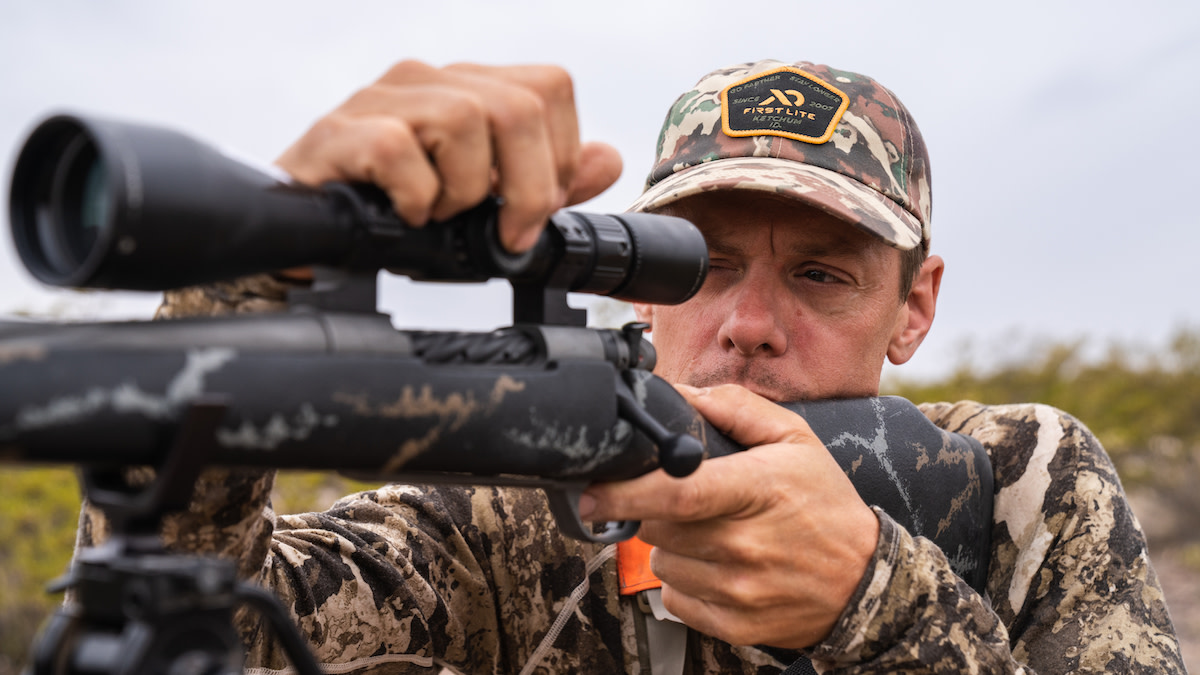
When folks talk about “scope leveling,” they usually mean installing a scope such that the vertical, or “Y,” axis of the reticle is exactly perpendicular to the action of the rifle.
If you’ve used products like the Wheeler Professional Reticle Leveling System, you’re familiar with this infuriating, time-consuming process.
However, “scope leveling” can also refer to leveling a reticle to the earth while in the process of shooting. When the term is used in this way, it doesn’t matter whether the scope is leveled to the rifle or not. All that matters is that the reticle is level to the earth when the user pulls the trigger.
You might assume that these concepts can be used interchangeably. If you did, you’d be like me, and like me, you’d be wrong. Turns out, the latter process is much, much more crucial than the former.
You Need a Level Reticle A reticle that is canted even a few degrees while in the process of shooting can throw off a shot by several inches, sometimes even several feet, depending on the distance of the shot, Nick Laufenberg told me. Laufenberg is a competitive long-range shooter and the precision rifle specialist for the optics company Vortex.
However, if the scope is installed crooked but the shooter “levels” the reticle before pulling the trigger, the shot will still land on target.
“If you have the optic canted one degree on your rifle, but it’s level when you’re zeroing it (i.e., you cant the rifle to achieve a level reticle) then you’re going to see less change in the horizontal point of impact than if you have the scope leveled to the gun but you cant the whole gun one degree when you shoot,” Laufenberg said.
In other words, a scope can be installed with cant and still produce good shots as long as the reticle is level with the earth when the user takes a shot. While reticle-rifle misalignment can introduce some horizontal displacement, it’s “minimal” compared to a reticle that is canted while taking a shot, Laufenberg said.
In fact, Laufenberg told me he’s known competitive shooters to install their scopes crooked on purpose to compensate for how their body naturally holds the rifle. The scope is not leveled with the action, but when they get behind the rifle to take a shot, the reticle is aligned with the earth.
How This Matters in the Field At this point, you’re probably asking the obvious question: So what? How does scope leveling impact shots in the field?
Laufenberg gave me an example. At 500 yards using a .300 Win. Mag, two degrees of cant moves the horizontal point of impact by 17.6 inches. That’s more than enough to miss or wound an animal, and the displacement increases with distance.
To take an example you’re more likely to encounter in the field: at 300 yards using a 6.5 Creedmoor, horizontal movement would be 8.6 inches with a two-degree cant.
Two degrees of cant isn’t very much, and Laufenberg said most people have trouble picking up two degrees on flat surfaces. On uneven surfaces, like those we often encounter in the field, five degrees is usually when people start to notice that their reticle is crooked.
If you’d like to do the calculations for yourself, here’s the formula. Again, this formula describes displacement when the reticle is canted on the gun in the field. It produces answers in MOA:
Vertical: Dial adjustment in MOA + 3 * cosine of angle of cant
Horizontal: Dial adjustment in MOA + 3 * sine of angle of cant
For a longer discussion and more examples, check out Vortex’s coverage of this topic here.
How to Overcome a Crooked Scope Laufenberg suggested several ways that hunters can ensure a leveled scope and rifle.
First, using the holdover marks on your reticle often provide enough visual feedback to identify a canted scope. If you’re using your holdover stadia and you see the center of your crosshairs are off to the left or right of your target, you know your scope isn’t leveled.
These bubble levels will also provide that feedback. They attach to the tube of your scope and, if properly installed, can verify you’re shooting straight before you pull the trigger.
Laufenberg sets up his rifles by leveling the scope reticle with the picatinny rail. Then, he installs a bubble level and verifies its position using a level on the scope’s top turret. Once he has the bubble level tightened most of the way, he uses a screwdriver or other small tool to tap the level into alignment.
Last Shot I don’t want to overstate the importance of this issue. At short distances, the effects of a canted scope and rifle are negligible, and most hunters know intuitively that a reticle must be level before pulling the trigger.
Still, I was surprised by the math. Especially for western hunters, who often take long shots on mountainous terrain, taking steps to ensure a level reticle is worth it. Those bubble levels only cost about $40, but they could make the difference between a missed shot and a downed animal.






Conversation